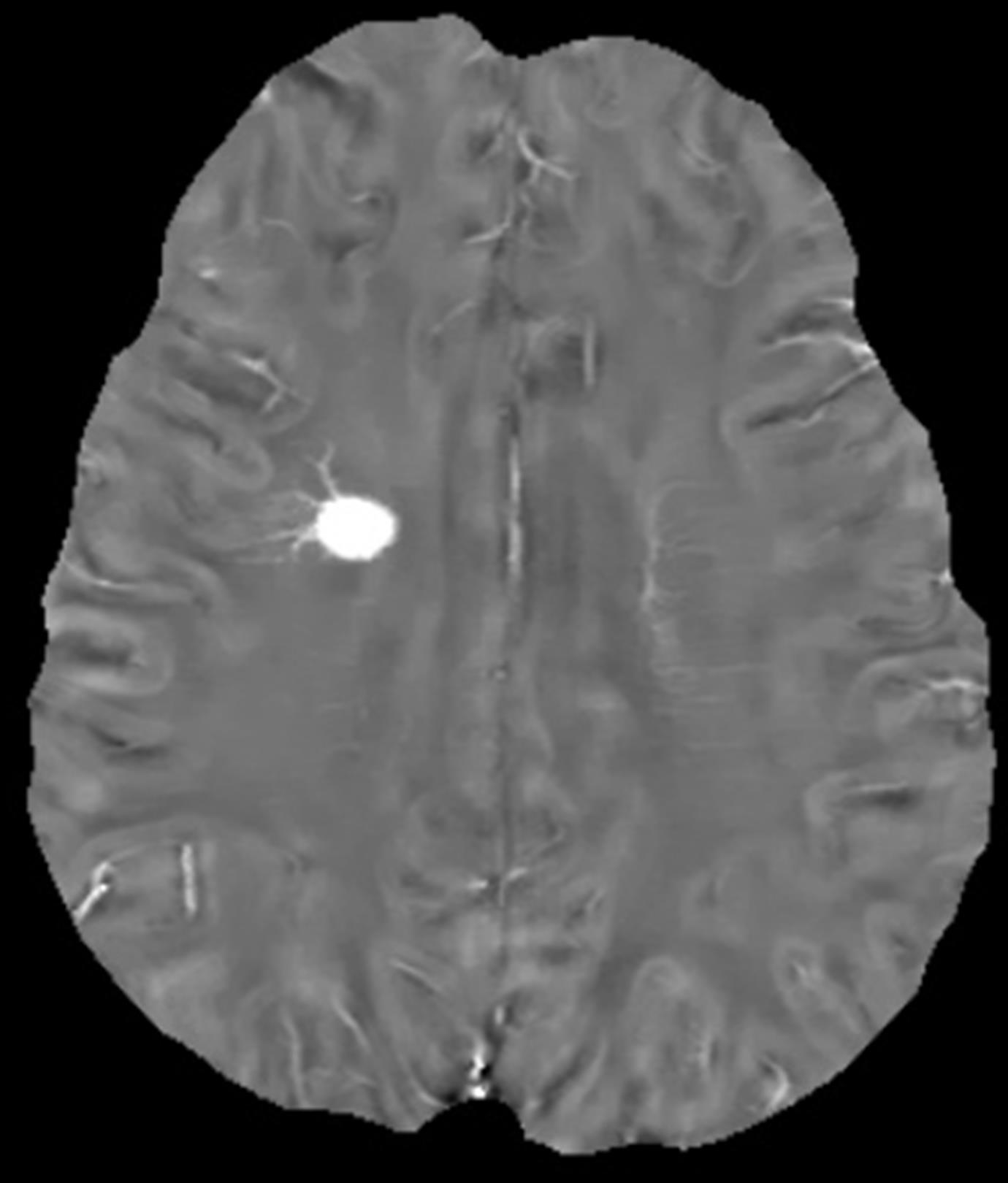

 The objective of this research is to develop novel analyses of the gradient echo (GRE) MRI data for quantitative characterization of intrinsic tissue property. Gradient echo MRI has been routinely used in clinical practice. A major aspect of its image contrast is based on its unique signal sensitivity to tissue susceptibility, which is particularly useful for studying blood deoxyhemoglobin (foundation of fMRI) and blood breakdown products, methemoglobin, hemosiderin and ferritin (various bleeding disorders including traumatic brain injury, hemorrhage and microbleed, vascular disorders, neurodegenerative diseases, et al) that have strong susceptibilities. For example, GRE MRI is becoming a method replacing CT for measuring acute intracerebral hemorrhage (ICH). However, GRE MRI is well known to have blooming susceptibility artifacts that make it difficult to identify the true boundary of hematoma and overestimate hematoma volume, a critical parameter in managing ICH patients. We hypothesize that rigorous analysis of GRE MRI data can allow accurate mapping of susceptibility source, enabling robust identification of hematoma volume. Mapping tissue susceptibility requires solving the field-to-source inverse problem, which is ill-posed using the phase data alone. We propose to develop a novel morphology enabled dipole inversion (MEDI) approach for analyzing both phase and magnitude data gradient echo MRI to extract tissue susceptibility quantity. The phase image contains the magnetic field information for fitting susceptibility via Maxwell's Equation. The magnitude image contains tissue structure information for matching with susceptibility interfaces via least discordance. We have proved mathematically that these phase and magnitude information are sufficient to determine susceptibility. We have obtained very encouraging preliminary data indicating that our MEDI inverse approach is sufficiently accurate in solving the field to source inverse problem. Accordingly, our proposed research consists of the following specific aims. 1) Develop the MEDI approach for analyzing phase and magnitude data in gradient echo MRI. 2) Apply MEDI to analyze gradient echo MRI of patients with primary ICH for measuring hematoma by comparing with CT.
The objective of this research is to develop novel analyses of the gradient echo (GRE) MRI data for quantitative characterization of intrinsic tissue property. Gradient echo MRI has been routinely used in clinical practice. A major aspect of its image contrast is based on its unique signal sensitivity to tissue susceptibility, which is particularly useful for studying blood deoxyhemoglobin (foundation of fMRI) and blood breakdown products, methemoglobin, hemosiderin and ferritin (various bleeding disorders including traumatic brain injury, hemorrhage and microbleed, vascular disorders, neurodegenerative diseases, et al) that have strong susceptibilities. For example, GRE MRI is becoming a method replacing CT for measuring acute intracerebral hemorrhage (ICH). However, GRE MRI is well known to have blooming susceptibility artifacts that make it difficult to identify the true boundary of hematoma and overestimate hematoma volume, a critical parameter in managing ICH patients. We hypothesize that rigorous analysis of GRE MRI data can allow accurate mapping of susceptibility source, enabling robust identification of hematoma volume. Mapping tissue susceptibility requires solving the field-to-source inverse problem, which is ill-posed using the phase data alone. We propose to develop a novel morphology enabled dipole inversion (MEDI) approach for analyzing both phase and magnitude data gradient echo MRI to extract tissue susceptibility quantity. The phase image contains the magnetic field information for fitting susceptibility via Maxwell's Equation. The magnitude image contains tissue structure information for matching with susceptibility interfaces via least discordance. We have proved mathematically that these phase and magnitude information are sufficient to determine susceptibility. We have obtained very encouraging preliminary data indicating that our MEDI inverse approach is sufficiently accurate in solving the field to source inverse problem. Accordingly, our proposed research consists of the following specific aims. 1) Develop the MEDI approach for analyzing phase and magnitude data in gradient echo MRI. 2) Apply MEDI to analyze gradient echo MRI of patients with primary ICH for measuring hematoma by comparing with CT.